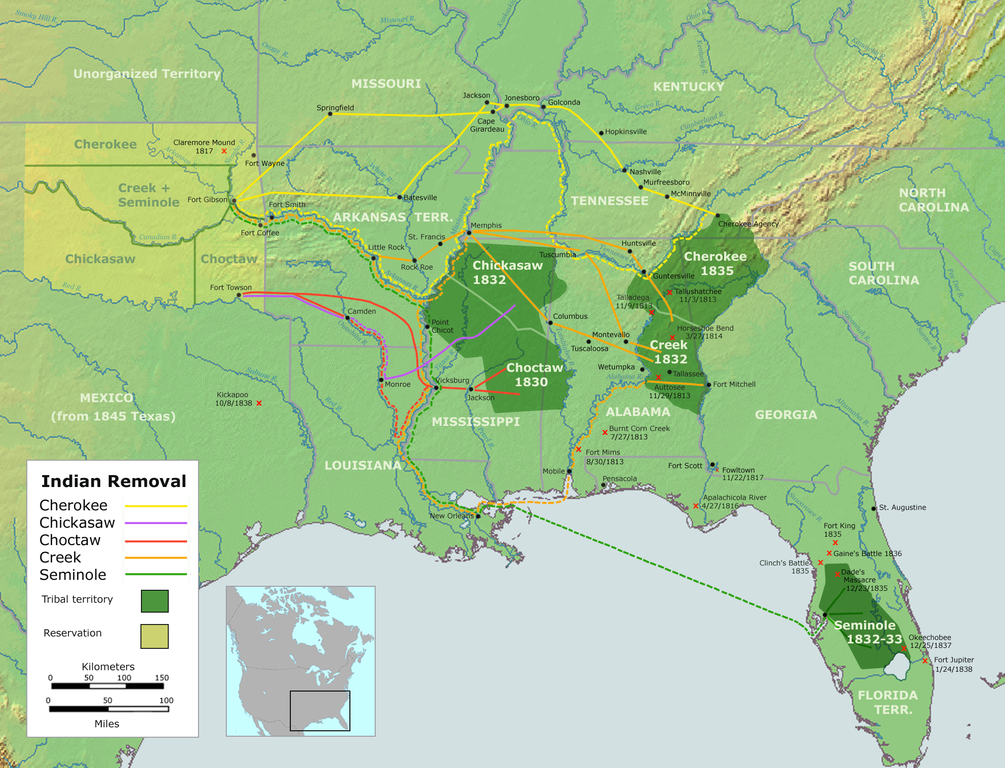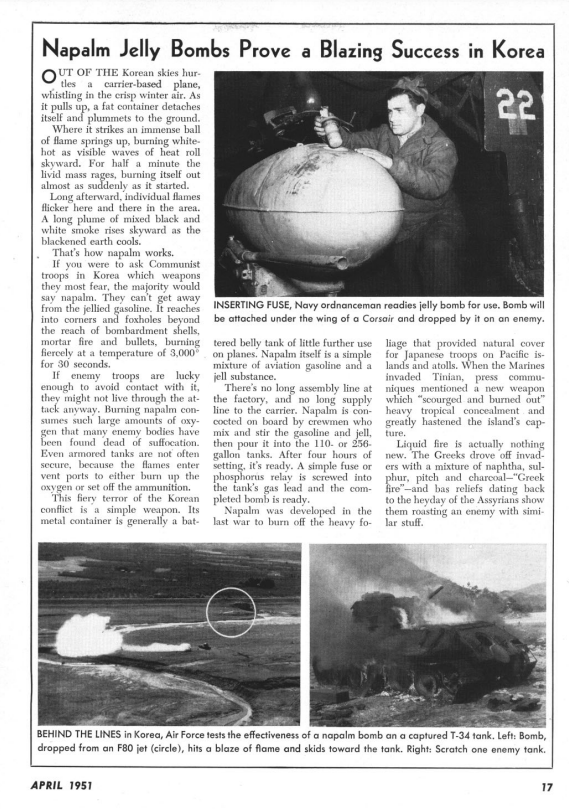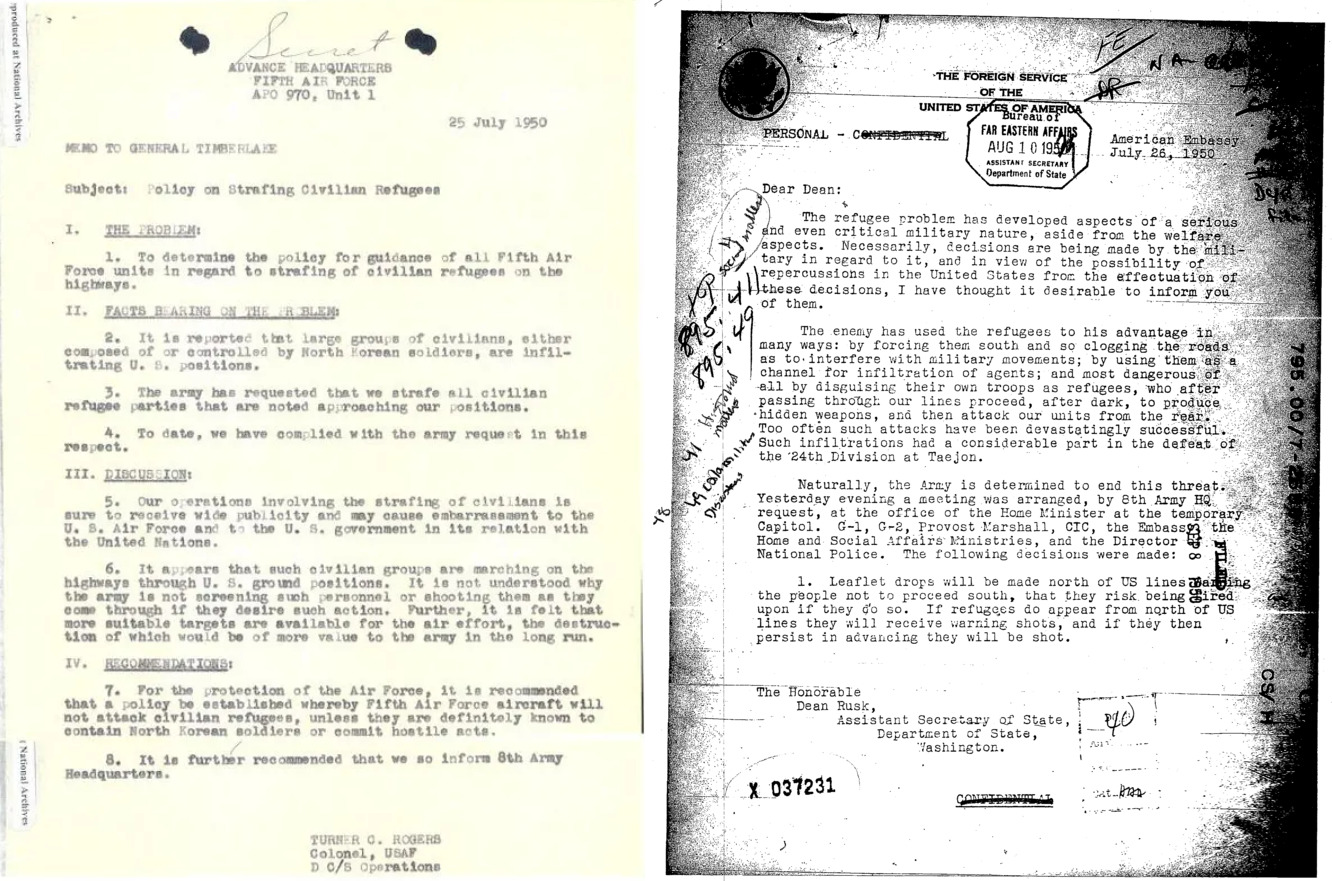List of atrocities committed by the United States of America
This is an ever-growing list of atrocities committed by the United States of America. What constitutes an atrocity does not have a universally accepted definition. However, a framework used by the United Nations describes atrocity crimes as a violation of international criminal law that falls under the historically three legally defined international crimes of genocide, war crimes, and crimes against humanity.[1]
Crimes against humanity are certain acts that are purposefully committed by a state, or on behalf of a state, as part of a widespread or systematic policy, typically directed against civilians, in times of war or peace. Ethnic cleansing is considered by many to constitute an atrocity crime. Mass killing is a concept which has been proposed by genocide scholars who wish to define incidents of non-combat killing which are perpetrated by a government or a state.
There is little consensus on how to officially and universally define such acts, and in many cases there can be overlap in the conditions and contexts where such acts occur, making it possible to classify them in multiple ways. Therefore a broad term such as "atrocity" may be used to describe a wide variety of acts which, when examined individually, may be described with more precision in their proper context.
North America
North America is part of the American continent and is commonly defined as the landmass north of the Colombia-Panama border and includes the islands of the Caribbean. The current territory of the United States is located primarily in North America, although some of its currently claimed territory, such as Hawaii, is located in Oceania. The activity of the United States in North America is characterized by its violent settler-colonial expansion across the continent in which acts of genocide against the indigenous North American people were committed to secure ever-increasing amounts of territory and natural resources for the Euro-American settlers, as well as the continued occupation and degradation of their land by the U.S. settler-state. Another key characteristic of the U.S. influence in North America is the legacy of U.S. involvement in and perpetuation of the Atlantic slave trade, a lengthy period in which enslaved African peoples were brought to the Americas to be used and exchanged as property by Euro-American settlers in order to work on the lands which were being methodically wrested from the indigenous population. The United States is also responsible for many atrocities outside of its present-day borders, largely in the Central American and Caribbean regions, which, along with many South American countries, have seen numerous campaigns of political destabilization, acts of terror, and economic and political coercion perpetrated against them by the United States regime.
Genocide of indigenous peoples of the United States
The territory of what today is the United States was occupied by European colonizers since 1492, and through brutal violence realized the slavery and extermination of indigenous peoples. Together with disease spread by Europeans, up to 95% of the indigenous populations of the Americas were exterminated.[2] This systematic brutal violence against indigenous peoples would later express itself ideologically in the United States through "manifest destiny", which was the belief that the United States was meant to expand its territory through conquest.
Indian Removal Act

On March 28, 1830, US Congress passed the Indian Removal Act, beginning the forced relocation of thousands of Native Americans in what became known as the Trail of Tears. The forced relocation placed more than 25 million acres of fertile, lucrative farmland into the hands of the mostly white Euro-American settlers in Georgia, Florida, North Carolina, Tennessee, Alabama, Mississippi, and Arkansas. More than 46,000 Native Americans were forced by the US military and other settler groups to abandon their homes and relocate to "Indian Territory" which eventually became the state of Oklahoma. More than 4,000 died on the journey from various causes, including disease, starvation, and exposure to extreme weather.[3]
In the case of the Cherokee, removal was implemented by 7,000 troops commanded by General Winfield Scott. Scott's men moved through Cherokee territory, forcing many people from their homes at gunpoint. As many as 16,000 Cherokee were thus gathered into camps while their homes were plundered and burned by Euro-American settlers. Subsequently those refugees were sent west in 13 overland detachments of about 1,000 per group, the majority on foot, enduring inadequate food supplies, shelter, and clothing, suffering especially bad conditions after frigid weather arrived. Escorting troops refused to slow or stop so that the ill and exhausted could recover. Additionally, the refugees had to pay farmers for passing through lands, ferrying across rivers, and even for burying their dead.[4]
California Genocide
In 1848, what is now California came under the rule of the United States, which was soon followed by the California genocide, in which the California settler-state and federal authorities incited, aided, and financed violence against the Native Californians. Between 1846 and 1873, it is estimated that non-Natives killed between 9,492 and 16,094 California Natives. Hundreds to thousands were additionally starved or worked to death.[5] The California Act for the Government and Protection of Indians was enacted in 1850 (amended 1860, repealed 1863). This law provided for "apprenticing" or indenturing Indian children to Whites, and also punished "vagrant" Indians by "hiring" them out to the highest bidder at a public auction if the Indian could not provide sufficient bond or bail, effectively legalizing a form of slavery targeting Native Californians.[6] In An American genocide: the United States and the California Indian catastrophe, 1846-1873, author Benjamin Madley writes that the "organized destruction of California's Indian peoples under US rule was not a closely guarded secret" and that "California newspapers frequently addressed, and often encouraged, what we would now call genocide, as did some state and federal employees." Madley also quotes US Indian Affairs commissioner John Collier as saying, "The world's annals contain few comparable instances of swift depopulation--practically, of racial massacre--at the hands of a conquering race."[5]
South America
Asia
Korean War
See also: Republic of Korea#Misconduct and killing of civilians by U.S. forces during the war

During the Korean War, U.S. troops killed large numbers of Korean civilians and engaged in copious firebombing with napalm, and, as was eventually revealed through declassified documents, had at certain times a policy of deliberately firing on South Korean refugee groups approaching its lines.[7] In an article of the Asia-Pacific Journal, Kim Dong choon writes that "Few are aware that the Korean authorities as well as US and allied forces massacred hundreds of thousands of South Korean civilians at the dawn of the Korean War".[8] There were also incidents of U.S. pilots ignoring their orders to stay within Korea and flying beyond its borders, strafing military targets in China and the Soviet Union.[9]
In the words of the United States Air Force General Curtis LeMay, commander of the U.S.'s Strategic Air Command:
[W]e went over there and fought the war and eventually burned down every town in North Korea anyway, some way or another, and some in South Korea, too. We even burned down Pusan—an accident, but we burned it down anyway. The Marines started a battle down there with no enemy in sight. Over a period of three years or so, we killed off—what—twenty percent of the population of Korea as direct casualties of war, or from starvation and exposure? [10]
During the Korean War, The United States dropped "635,000 tons of bombs in Korea (not counting 32,557 tons of napalm), compared to 503,000 tons in the entire Pacific Theater in World War II" and "at least 50 percent of eighteen out of the North's twenty-two major cities were obliterated." [11] According to U.S. Naval Captain Walter Karig, in his book Battle Report: The War in Korea, a compilation from official sources:
[W]e killed civilians, friendly civilians, and bombed their homes; fired whole villages with the occupants--women and children and ten times as many hidden Communist soldiers--under showers of napalm, and the pilots came back to their ships stinking of vomit twisted from their vitals by the shock of what they had to do. [12]
An anonymous U.S. officer's account of events of was aired to the U.S. public on the U.S. Defense Department radio program called "Time for Defense"[13] during a time when the war was still being referred to as a "police action".[14] In the call that aired on the broadcast, the U.S. officer states, "What makes it so difficult over here is that you can't tell the damn North Koreans from the South Koreans, and that's caused a lot of slaughter."(audio file)[15]

Emblematic of the U.S. policy of firing on groups of refugees is the incident of the Nogeun-ri massacre, also written as No Gun Ri (Korean: 노근리). In July 1950, American soldiers "machine-gunned hundreds of helpless civilians under a railroad bridge"[16] and according to accounts that came out after this story was revealed in 1999, U.S. veterans spoke of 100 or 200 or "hundreds" dead and described "a preponderance of women, children and old men among the victims", while Korean witnesses said 300 were killed at the bridge and 100 in a preceding air attack. One Korean witness commented that "the American soldiers played with our lives like boys playing with flies." One of the U.S. veterans described it as "wholesale slaughter."[16]
Although this incident had gone unacknowledged for decades, in 2001 the U.S. Army acknowledged the killings, calling them a "regrettable accompaniment to a war." In 2006, it was revealed that among incriminating documents omitted from the 2001 U.S. report, there was a declassified letter from the U.S. ambassador in South Korea, dated the day the Nogeun-ri killings began, saying the Army had adopted a policy of firing on refugee groups approaching its lines.[7] U.S. veterans have also described other refugee killings as well, when U.S. commanders ordered their troops to shoot civilians as a defense against disguised enemy soldiers, and declassified U.S. Air Force reports from mid-1950 show that pilots also sometimes deliberately attacked "people in white," (referring to white peasant garb) apparently suspecting disguised North Korean soldiers were among them.[16]
Africa
Europe
Oceania
References
- ↑ "Framework of Analysis for Atrocity Crimes." United Nations, 2014.
- ↑ “Nonetheless, the consequences for the Indians, Mexican and Peruvian as well as others, were disastrous. Within little more than a century, the Indian population had declined by 90 percent and even 95 percent in Mexico, Peru, and some other regions (Borah 1962). In Mexico, for instance, from a preconquest population of 25 million (or 11 million, according to an earlier estimate by Cook and Simpson 1948), it had declined to a million and a half or less.”
Andre Gunder Frank (1978). World accumulation 1492-1789 (p. 43). ISBN 9780875862040 [LG] - ↑ “May 28, 1830 CE: Indian Removal Act | National Geographic Society.” Nationalgeographic.org.
- ↑ “Cherokee | History, Culture, Language, Nation, People, & Facts | Britannica.” Encyclopædia Britannica.
- ↑ 5.0 5.1 Benjamin Madley (2016). An American genocide: the United States and the California Indian catastrophe, 1846-1873. New Haven: Yale University Press.
- ↑ Ojibwa (March 2, 2015). "California's War On Indians, 1850 to 1851". Native American Netroots.
- ↑ 7.0 7.1 Youkyung Lee (2014-08-07). "S. Korean who forced US to admit massacre has died" Associated Press. Archive. “On July 26, 1950, outside the central South Korean village of No Gun Ri, hundreds of civilians from nearby villages, ordered south by U.S. troops, were stopped by a dug-in battalion of the U.S. 7th Cavalry Regiment, and then were attacked without warning by U.S. warplanes. Survivors fled under a railroad overpass, where for the next three days they were fired on by 7th Cavalry troops. [...] in January 2001 the Army acknowledged the No Gun Ri killings but assigned no blame, calling it a “deeply regrettable accompaniment to a war.” [...] In 2006 it emerged that among incriminating documents omitted from the 2001 U.S. report was a declassified letter from the U.S. ambassador in South Korea, dated the day the No Gun Ri killings began, saying the Army had adopted a policy of firing on refugee groups approaching its lines.”
- ↑ Kim Dong choon (2010-03-01). "The Truth and Reconciliation Commission of Korea: Uncovering the Hidden Korean War. The Other War: Korean War Massacres." The Asia-Pacific Journal: Japan Focus. Archived from the original on 2022-07-26. Retrieved 2022-07-26.
- ↑ Korea: The Unknown War. TV Documentary Series. Episode 2: "An Arrogant Display of Strength." Thames Television, 1988. Aired on WGBH Boston, 1990. (URL: https://www.youtube.com/watch?v=aVCuku3Ldi0)
- ↑ Richard H. Kohn and Joseph P. Harahan (1988). Strategic Air Warfare: an interview with generals Curtis E. LeMay, Leon W. Johnson, David A. Burchinal, and Jack J. Catton (p. 88). [PDF] Washington, D.C.: Office of Air Force History, United States Air Force. ISBN 0-912799-56-0
- ↑ “The United States dropped 635,000 tons of bombs in Korea (not counting 32,557 tons of napalm), compared to 503,000 tons in the entire Pacific Theater in World War II. Whereas sixty Japanese cities were destroyed to an average of 43 percent, estimates of the destruction of towns and cities in North Korea "ranged from forty to ninety percent"; at least 50 percent of eighteen out of the North's twenty-two major cities were obliterated.”
Bruce Cumings (2010). The Korean War: A History: '"The Most Disproportionate Result:" The Air War' (pp. 159-160). New York: Modern Library. ISBN 978-0-679-64357-9 - ↑ Walter Karig; Malcolm W Cagle; Frank A Manson; et al (1952). Battle Report: The War in Korea (pp. 111-112). New York: Rinehart.
- ↑ Andrew J. Huebner. The Warrior Image: Soldiers in American Culture from the Second World War to the Vietnam Era. 2008. Chapter 4: "Kilroy is Back". The University of North Carolina Press. (p. 103)
- ↑ A Short History of the Department of State. "NSC-68 and the Korean War." Office of the Historian, Foreign Service Institute, U.S. Department of State. URL: https://history.state.gov/departmenthistory/short-history/koreanwar
- ↑ Korea: The Unknown War. TV Documentary Series. Episode 2: "An Arrogant Display of Strength." Thames Television, 1988. Aired on WGBH Boston, 1990. (URL: https://www.youtube.com/watch?v=aVCuku3Ldi0)
- ↑ 16.0 16.1 16.2 Sang-Hun Choe, Charles J. Hanley and Martha Mendoza (1999-09-30). "U.S. Massacre of Civilians in Korean War Described" Washington Post. Archive.